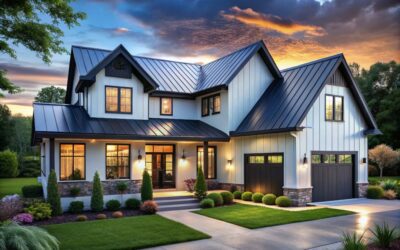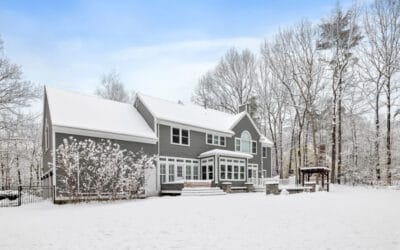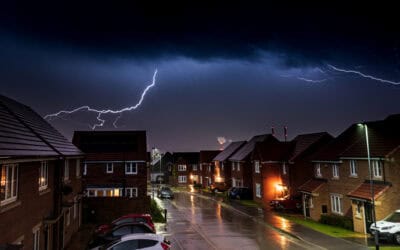As energy costs continue to rise, homeowners are increasingly looking for ways to reduce their energy consumption and lower utility bills. One effective solution that is gaining significant popularity is the metal roof. Known for their durability, aesthetic appeal, and longevity, metal roofs also provide substantial energy-saving benefits.
A metal roof can be up to 40% more energy-efficient than traditional roofing materials, such as asphalt shingles. Since the roof is the part of the home that is most exposed to the sun, its performance has a direct impact on the overall indoor temperature. By minimizing heat absorption, metal roofing helps maintain a comfortable indoor climate, making it an ideal choice for homeowners looking to save on energy costs while also improving the energy efficiency of their homes.
In addition to their energy efficiency in hot weather, metal roofs are also highly effective in colder climates like here in Ontario. During the winter months, metal roofs help prevent heat loss from the home. Unlike traditional roofing materials, which can trap heat in the attic, metal roofs promote the quick shedding of snow and ice. The smooth surface of metal allows snow to slide off easily, reducing the weight and potential damage caused by ice dams, which can form in colder temperatures.
What Makes Metal Roofing So Energy-Efficient?
Metal roofs are highly energy-efficient due to their outstanding performance in three critical areas:
Reflectivity: Reflectivity refers to the roof’s ability to reflect solar heat away from the building, preventing excessive heat buildup. Metal roofs are highly reflective, with the ability to reflect up to 70% of the sun’s energy. When heat is reflected away, the roof remains cooler, reducing the need for air conditioning during warmer months. Additionally in cooler months, the reflective properties of metal roofs help retain heat inside the home by reflecting the warm air back into the living space. This reduces the amount of heat that escapes through the roof, keeping the home warmer and reducing the workload on heating systems.
Thermal Emittance and Emissivity: While both thermal emittance and emissivity are related to how a roof handles heat, they focus on different processes. Thermal emittance measures the roof’s ability to release absorbed heat, while emissivity refers to how effectively the roof can transfer that heat back into the environment. Metal roofs excel in both of these areas. The high thermal emittance of metal allows it to quickly release the heat that it absorbs from the sun. This prevents heat from building up on the roof and radiating into the home, keeping interior spaces cooler. A metal’s high emissivity allows the material to efficiently release absorbed heat into the atmosphere, ensuring that the roof does not retain excess heat for extended periods.
Ventilation: Proper roof ventilation is essential for maximizing energy efficiency. A well-ventilated roof helps prevent heat buildup and promotes the natural flow of cooler air throughout the home. Metal roofs are often installed with a batten system, which creates a gap of air between the metal panels and the underlying roofing material. This airspace facilitates air circulation, allowing hot air to escape while cooler air is drawn in, and reducing heat buildup in attic spaces.
In contrast, traditional roofing materials like asphalt shingles are typically installed directly onto plywood or decking, with little to no air gap. This direct installation can lead to trapped heat beneath the roof. As a result, homes with poorly ventilated roofs often require more energy to maintain comfortable indoor temperatures.
Metal roofs are an excellent choice for homeowners seeking energy-efficient solutions. Their superior reflectivity, high thermal emittance and emissivity, and effective ventilation system make them a standout option for regulating home temperatures and reducing energy consumption. With their durability and long lifespan, metal roofs offer both financial and environmental benefits, making them a smart investment for homeowners looking to reduce their carbon footprint and lower their energy bills. A metal roof is an investment that pays off in both the short and long term. Reach out to Ageless Roofing to find out how a metal roof can reduce you homes energy consumption.






